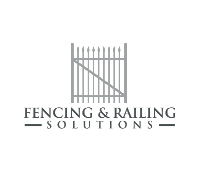In every state, building codes dictate the minimum standards that must be met during the construction process. When it comes to roofing, these codes address each part of the roofing system. One of the most essential parts of the roofing system is the underlayment.
What Is Roof Underlayment?
Roofing underlayment is a material that rests under the roofing material and above the roof deck, also known as roof sheathing. It is installed directly onto the roof deck and acts as another layer of protection against the elements.
Roof underlayment is designed to repel water. When rain is combined with powerful winds, rain can actually be driven up and under the shingles on the roof. Roof underlayment prevents wind-driven rain from further damaging the roof.
In areas that experience ice and snow in the winter, ice and snow dams can cause serious damage. The heat from the home rises, causing snow and ice to melt. The resulting water can seep under the roofing material and cause damage. A well-fitted roof underlayment provides a leak-resistant fit.
In addition to protecting a roof from water damage, underlayment can also be used to enhance a fire rating.
The Three Main Types Of Roof Underlayment
For metal roofs, there are three main types of underlayment that can be used:
Asphalt Felt Underlayment
This type of roof underlayment is created by taking a roll of recycled paper and adding hot asphalt, a waterproofing agent. It is known as tar paper and asphalt-soaked felt.
The affordable nature of this product makes it popular. However, the roofing industry has begun to shift to other options. Why? Asphalt felt underlayment isn’t as durable as the other options. In fact, in some sections of the roof, depending on the slope, two layers may need to be applied.
The short-lived nature of this type means that it will likely need to be replaced long before a metal roof does.
Synthetic Roof Underlayment
Made from woven polyethylene or polypropylene fibers that have been treated with a resilient polymer, synthetic underlayment is fast and easy to install, has a longer lifespan than tar paper, and can withstand UV exposure for a full year without drying out.
That being said, many synthetic underlayments don’t allow the roof deck to dry up, meaning it is not vapor permeable. Having a vapor permeable underlayment is very important when installing a DECRA metal roof because it allows free-flowing air between the metal roof and the exterior roof deck.
A synthetic underlayment with a perm rating of 10 or higher has the permeability required for a metal roof.
Ice And Water Shield Underlayment
Also known as peel-and-stick synthetic underlayment, self-adhering membrane, or rubberized asphalt, they have an adhesive side and are considered “self-healing” because of the rubber-like qualities of the membrane. This feature makes this type of membrane particularly great for sealing around fasteners and penetrations, like skylights.
Ice and water shield can be manufactured to withstand high temperatures. Our team highly recommends installing an ice and water shield that is rated for high temperatures under a DECRA roof.
Underlayment Is An Integral Part Of A Roofing System
It’s always important to tailor the underlayment installation to the specific roof. Always follow the instructions provided by the manufacturer.
Finally, be sure to check your local building codes to ensure that the underlayment meets those standards.





Leave A Comment